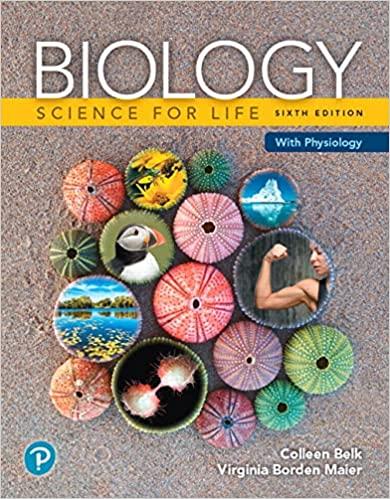Aisha and Jonah are newlyweds, both beginning graduate school programs at the same university. They are excited
Question:
Aisha and Jonah are newlyweds, both beginning graduate school programs at the same university. They are excited to start a family but would like to wait to have children until they both have jobs. Aisha has never liked hormonal birth control, and disposable methods like sponges and condoms are out of their price range. Recently Aisha came across several high-quality science resources stating that an egg cell is only capable of surviving 12–24 hours after ovulation. She also learned that cervical secretions change in response to hormones. When progesterone is high (after ovulation), the mucus thickens and is less abundant and slows the ascent of sperm. But when estrogen is high (right before ovulation), the cervical mucus is abundant, stringy, has the consistency of raw egg white, and aids sperm in traveling to the egg cell. Based on the information above, all of which is correct, she and Jonah conclude that they can avoid a pregnancy if Aisha pays close attention to her cervical secretions and if they abstain from sexual intercourse only when her cervical mucus changes to the type that facilitates sperm traveling to the oviducts.
A woman can become pregnant during only one 24-hour period every month.
Questions
1. Look at Figure 7.12 showing the ovary undergoing ovulation. What do the cells surrounding the developing egg cell produce?
2. As the cells surrounding a developing egg cell slowly increase in size and number, what happens to the amount of estrogen in the woman’s body?
3. Although it is difficult to predict exactly when the cervical mucus would begin to change to the slippery, fertility-enhancing mucus, do you think this change would happen abruptly or begin to change slowly as estrogen increases?
4. Sperm can survive in the female reproductive tract for up to 5 days. If a couple had unprotected sex a few days before the fertility-enhancing cervical mucus was noticeably present, could the sperm already be present in the oviduct?
5. Consider your answers to questions 1–4. Explain why the statement bolded above sounds right, but isn’t.
Figure 7.12
Step by Step Answer:

Biology Science For Life With Physiology
ISBN: 9780134555430
6th Edition
Authors: Colleen Belk, Virginia Maier





